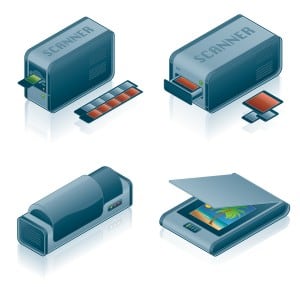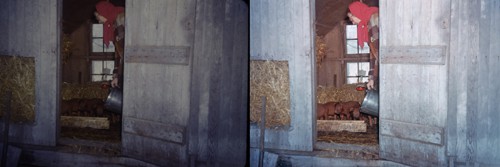Types of Scanners
There are many types of scanners marketed to convert slides and negatives to digital, but there is a wide range of options resulting in varied quality results. If you are going to spend the time, money, and effort to convert family slides to digital, be sure you know your options.
Not all Scanners are Created Equal
You may have seen ads for slide scanners you can buy for around $99 and it may be tempting to get one to convert your slides collection to digital. Before you rush out and do this, there is plenty to be aware of. These aren’t even technically “scanners” as they snap a low resolution digital image. Much is sacrificed in quality using this method. If you are going to take the time and effort to convert your slides to digital, it should be done the right way for the best quality.
Dedicated Film Scanners
There is a big difference in using a dedicated film scanner like the Nikon Coolscan 9000. The scanner uses a high quality 3-line CCD sensor for up to 4000 dpi true optical resolution and Digital ICE® infrared technology to remove dust specks and scratches from the digital image output.
Comparison Testing
We got our hands on one of the cheap units (the VuPoint brand) and did some testing on our own. The scan itself was easy enough to acquire, but the quality is so poor it is simply a waste of time. The shadow areas lack any detail and the highlights are blown out and the overall resolution is poor.
Here are 4 comparisons with the VuPoint scanner on the left and our processing with the Nikon Coolscan 9000ED scanners on the right.
When it comes to preserving photo memories, it is important to do it right from the start. We take great pride in our work and are confident you will be pleased with the results Memories Renewed provides.






